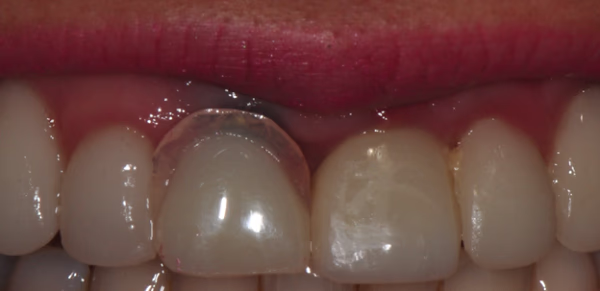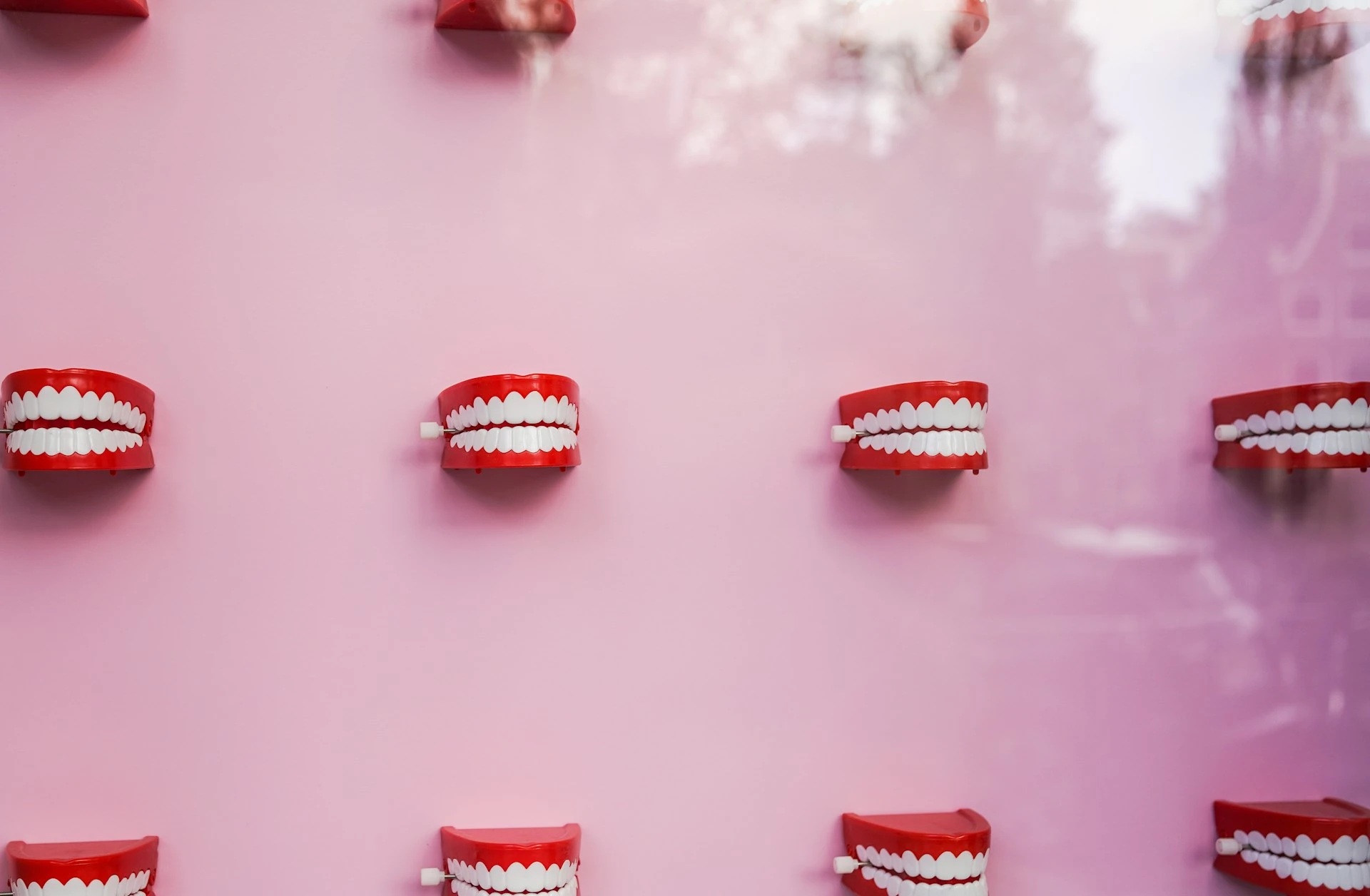Missing teeth can occur for various reasons, including:
- Extensive tooth decay due to poor oral hygiene
- Injuries from accidents or sports
- Gum disease that damages supporting structures
- Genetic conditions that affect tooth development
- Trauma leading to tooth extraction
The consequences of missing teeth go far beyond aesthetics. When a tooth is lost, the jawbone underneath begins to deteriorate due to lack of stimulation, which can alter facial structure over time.
Missing teeth also significantly impact your ability to chew properly, potentially limiting food choices and affecting nutrition. Additionally, gaps can affect speech clarity and reduce self-confidence in social situations.
The Reality of Tooth Extraction
So you’ve recently had a tooth extraction? Let’s talk about what comes next.
Uh-oh, you did it. You finally got rid of the tooth that has been bothering you for the past year.
You attempted to bear the agony at first, telling yourself that it would go away if you #prayed #promisedtoeatlesssweets #meditated #wereagoodperson #totallyignore.
It didn’t work; the agony became so severe that you had to bite the bullet and visit your dentist in the end. Amidst the swearing and sweating, you realized – Hey! The extraction was not so bad after all.
Your tooth is now out, and you’re feeling much better. Phew. Ok. So, now what?
Here’s a breakdown of the possibilities for restoring your smile! As a car enthusiast, I’ll use the analogy with cars!
1. Dental implants: BMWs

Dental implants are the BMWs of dentistry (as you can see, I’m completely biased). These are titanium screws that you insert into the jawbone to support a prosthetic tooth. Once implanted, they should feel and appear similar to your actual teeth.
Dental implants in Singapore are more expensive than the ordinary dental operation, but if performed correctly by the surgeon and properly maintained, they can last a lifetime, just like your natural teeth.
Pros:
- Looks and feels almost identical to the real McCoy. They are fixed in your jaw, much like your natural teeth.
- You do not need to take them out at night. They are often as easy to clean as genuine teeth.
- No one will know you had poor teeth before!
- Preserves jawbone structure and prevents bone loss
- Does not require altering adjacent teeth
- Success rate of 90-95% over 10 years when done in selected cases
Cons:
- Not everybody can afford a BMW or a Lexus.
- The implant operation is highly operator dependent and should only be performed by experts.
- Not everyone is a good candidate, especially if they have an immune system disorder or smoke like a chimney.
- Longer recovery time; healing takes several months
- Requires healthy jawbone; bone grafting may be needed in some cases
The Implant Process
The placement of dental implants typically involves:
- An initial consultation and examination to assess bone quality
- Surgical placement of the titanium post into the jawbone
- A healing period of 3-6 months for osseointegration (fusion with bone)
- Placement of an abutment to connect the implant to the crown
- Attachment of a custom-made crown to complete the restoration
Dental implants in Singapore cost between $4000 and $7000. Medisave can claim a percentage, but only with government consent.
2. Traditional dental bridges: Toyotas

A bridge is just that. The two adjacent teeth next to your missing tooth are trimmed down to accommodate the missing tooth, bridging the gap! For additional information on the process of installing dental bridges, check this YouTube video.
They, like Toyotas, are inexpensive and dependable, making them more “mass market”.
Pros:
- They cost less than dental implants.
- It is an excellent option for those who are immunocompromised.
- They can also be designed to seem very similar to your actual teeth.
- More comfortable and feels more natural compared to a denture
- Can correct alignment of adjacent supporting teeth (to a certain extent)
Cons:
- You must cut down two adjacent teeth to hold one tooth.
- It’s more difficult to clean than dental implants.
- The dentist has a more difficult time detecting deterioration under the bridge since the teeth are splinted together.
- Cannot be done if not enough healthy supporting teeth or in the presence of active gum disease
The Bridge Process
The dental bridge process typically involves:
- Clinical examination to assess your dental condition
- Radiographic examination to check underlying bone and conditions
- Consultation to explain dental issues
- Preparation of adjacent teeth (trimming them down)
- Taking impressions for the bridge fabrication
- Placement of temporary bridge
- Final fitting and cementing of the permanent bridge
Dental bridges in Singapore cost between $2000 and $3500.
3. Acid Etch Bridge – Hyundais

This deserves its own space, despite the fact that it is also a bridge. This approach appeals to me because it is similar to a normal bridge, with the exception that the adjacent teeth are only minimally treated to hold the missing tooth.
Pros:
- Very comparable to traditional bridges, but causes less harm to adjacent teeth!
- Even cheaper than the traditional bridge option.
Cons:
- The disadvantages are identical to those of a conventional bridge.
- Not everyone is an ideal candidate.
- If you have a strong bite, this option is not for you.
- They tend to fall off and must be glued back by your dentist every few years.
Acid etch bridges (also known as Maryland bridges) require minimal preparation of adjacent teeth, making them more conservative than traditional bridges. However, they are generally less durable and may not be suitable for replacing molars or for patients with heavy bites.
Acid etch bridges in Singapore cost between $1000 and $2000.
4. Single tooth partial denture – Bicycles

These are the bicycles of contemporary dentistry. This is far less popular for restoring a single lost tooth. You can see why in the picture below. Enough said. Partial dentures are typically only temporary solutions and are prone to breakage.
Pros:
- Extremely inexpensive!
- A good temporary solution till you save enough money for your dental implant or bridge.
- Caregivers may remove the dentures for cleaning, making it a good alternative for seriously ill patients.
- Additional teeth can be added directly to the partial denture if any teeth are lost in the future
- No surgery required
Cons:
- The tooth is usually not natural-looking because it is constructed of plastic.
- You must remove it at night to clean and air (hint: your kids and hubby will know your teeth are not real!!).
- It must be replaced every few years since the bone shrinks and new dentures are required.
- Partial dentures can be uncomfortable
- Altered taste and speech – need some time to adapt to
- Can be lost or broken if dropped
The Denture Process
Getting a partial denture typically involves:
- Taking impressions of your mouth
- Creating a model for the denture
- Fitting sessions to ensure comfort
- Adjustments as needed after wearing
Dentures in Singapore cost between $500 and $1200.
5. Orthodontics – Grab
Orthodontics is not a car, but rather a mechanism for getting from Point A to Point B in certain missing tooth scenarios.
For example, if you lose a tooth and have crowded teeth, braces could be the solution! With braces, you may correct gaps while also straightening your teeth!
Pros:
- As already stated, two goals in one!
- There is no need to chop down adjacent teeth for a bridge.
- There is no need to undergo surgery for dental implants.
Cons:
- You must have overcrowded teeth to even consider this option.
- Your orthodontist will need to decide whether your teeth can be relocated in such a way that they look nice.
Braces cost in Singapore varies from $4000 and $10000, depending on the type of therapy. See our comprehensive guide to braces in Singapore.
Additional Options
Implant-Supported Bridges
An implant-supported bridge is an ideal solution for multiple missing teeth in a row. With this option, only the teeth at the ends are supported by implants, with the middle teeth (pontics) suspended between them. This provides a more economical alternative to placing individual implants for each missing tooth.
Pros:
- More economical than multiple individual implants
- No need to modify healthy adjacent teeth
- Provides stability similar to individual implants
- Natural appearance and function
Cons:
- Still requires surgical placement of implants
- More expensive than traditional bridges
- Requires sufficient bone density at implant sites
- Not suitable for everyone
Flipper (Temporary Partial Denture)
A flipper is a lightweight, temporary partial denture that can be quickly fabricated to replace a missing tooth while waiting for a more permanent solution.
Pros:
- Relatively inexpensive and painless option
- Lighter than conventional partial dentures
- Can be fabricated quickly
- Good temporary solution
Cons:
- Not durable for long-term use
- Can be uncomfortable
- May break easily due to thin construction
- Less stable than other options
Some of you may wish to avoid going to the dentist after losing a tooth because you are still afraid of them. It is crucial to remember, however, that most teeth continue to shift in your mouth far into adulthood!
You DO want to restore that area so your bite does not get messed up in the long run!
Maintenance Requirements
For Dental Implants
- Brush twice daily and floss regularly
- Use interdental brushes around implant areas
- Regular professional cleanings (every 6 months)
- Avoid chewing extremely hard items
- Avoid smoking as it can compromise implant success
For Dental Bridges
- Clean under the bridge using floss threaders or water flossers
- Regular brushing and professional cleanings
- Avoid extremely sticky foods that could dislodge the bridge
- Watch for signs of decay in supporting teeth
For Partial Dentures
- Remove and clean daily
- Soak overnight in denture solution
- Handle with care to prevent breakage
- Have them professionally cleaned regularly
- Replace when they become loose due to bone changes
When to Seek Professional Help
It’s time to return to your dentist if any of these occur:
- Cracked or broken crown/bridge/denture
- Excessive wear resulting in holes or perforation
- Recurrent tooth decay underneath restorations
- Gum recession resulting in visible edges (dark lines)
- Pain, discomfort, or looseness
- Difficulty chewing or speaking
Comparing Your Options
When deciding which tooth replacement option is best for you, consider:
Cost Comparison
| Option | Price Range |
|---|---|
| Dental Implants | $4,000-$7,000 |
| Traditional Bridges | $2,000-$3,500 |
| Acid Etch Bridges | $1,000-$2,000 |
| Partial Dentures | $500-$1,200 |
Durability & Appearance
| Option | Durability | Natural Look |
|---|---|---|
| Dental Implants | Lifetime with proper care | Excellent |
| Traditional Bridges | 5-15 years | Very Good |
| Acid Etch Bridges | 3-5 years | Good |
| Partial Dentures | 3-8 years | Fair |
Impact & Maintenance
| Option | Effect on Adjacent Teeth | Maintenance Level |
|---|---|---|
| Dental Implants | None | Low |
| Traditional Bridges | Requires trimming | Moderate |
| Acid Etch Bridges | Minimal preparation | Moderate |
| Partial Dentures | None | High |
Insurance and Cost Considerations
The cost of replacing a missing tooth varies significantly depending on the treatment selected:
Insurance Coverage
Most dental insurance plans provide some coverage for tooth replacement, though coverage levels differ:
- Dental implants: Historically less covered, though more plans now offer partial coverage. Medisave in Singapore may cover a portion with government consent.
- Dental bridges: Often covered at 50-80% by insurance plans.
- Partial dentures: Usually covered at higher percentages (60-80%).
- Orthodontics: Coverage varies widely, often with lifetime maximums.
Long-term Cost Analysis
While implants have the highest upfront cost, their longevity may make them more economical over time. Bridges and dentures require replacement periodically, adding to their lifetime cost.
Financing Options
Many dental practices offer payment plans or financing options to make treatments more affordable:
- Monthly payment plans
- Healthcare credit cards
- Dental discount plans
- Healthcare savings accounts (where applicable)
Importance of Consulting a Dental Specialist
While online research provides valuable information, consulting with a dental professional is crucial for determining the best option for your specific situation. A prosthodontist—a specialist in tooth replacement and cosmetic dentistry—can provide expert guidance tailored to your needs.
During a consultation, a dental specialist will:
- Assess your oral health condition
- Evaluate bone density and gum health
- Consider the number and position of missing teeth
- Take into account your age, health, and lifestyle
- Discuss budget constraints and insurance coverage
- Recommend the most suitable treatment options
In Singapore, becoming a recognized prosthodontist requires an additional three to four years of specialized training beyond general dentistry, ensuring advanced expertise in complex tooth replacement procedures.
So, take your pick from the bicycles to the more expensive vehicles in Dentistry and discuss it with your friendly dentist (is this an oxymoron?) before making a selection! I hope this helps!:)
Conclusion
Replacing missing teeth is not just about aesthetics—it’s essential for maintaining proper oral function, preserving bone structure, and preventing further dental issues. Each replacement option offers unique advantages and considerations:
- Dental implants provide the most natural-looking, long-lasting solution but require sufficient jawbone density and a higher initial investment.
- Traditional bridges offer a reliable mid-range option that doesn’t require surgery but does impact adjacent teeth.
- Acid etch bridges present a more conservative alternative to traditional bridges but may not be suitable for all situations.
- Partial dentures provide an affordable temporary solution that’s easily modified.
- Orthodontic approaches can work in specific situations, particularly when there are alignment issues.
Remember that teeth continue to shift throughout adulthood, making it crucial to address missing teeth promptly to prevent long-term bite problems and further tooth loss. By consulting with a dental professional and considering factors like durability, aesthetics, maintenance requirements, and cost, you can make an informed decision that best suits your oral health needs and lifestyle.
Whether you choose the BMW, Toyota, or bicycle of dental restorations, the important thing is maintaining your oral health and preserving your ability to smile, speak, and eat comfortably for years to come.

